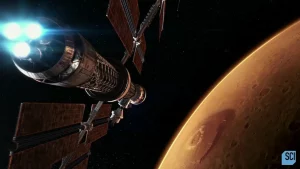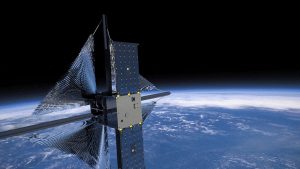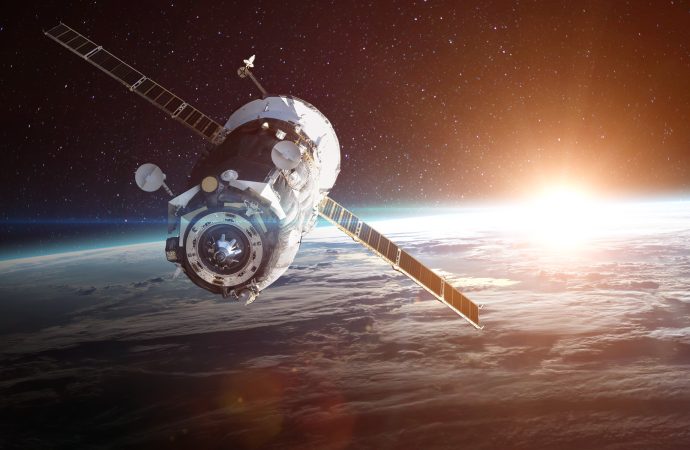The dawn of the space age in the mid-20th century marked the beginning of humanity’s journey into the cosmos. Since then, advancements in space technology have continuously pushed the boundaries of what is possible. The development of new rockets and satellites has played a pivotal role in expanding our capabilities, from exploring distant planets to
The dawn of the space age in the mid-20th century marked the beginning of humanity’s journey into the cosmos. Since then, advancements in space technology have continuously pushed the boundaries of what is possible. The development of new rockets and satellites has played a pivotal role in expanding our capabilities, from exploring distant planets to enhancing everyday life on Earth through satellite communications. This article explores the recent advancements in space technology, focusing on the latest innovations in rockets and satellites, their benefits, challenges, and future prospects.
The Evolution of Rocket Technology

Image by : Yandax
Rockets are the cornerstone of space exploration, providing the necessary propulsion to escape Earth’s gravity and reach outer space. Over the past few decades, significant advancements have been made in rocket technology, leading to more efficient, cost-effective, and reliable launches.
Reusable Rockets
One of the most transformative advancements in rocket technology is the development of reusable rockets. Traditionally, rockets were single-use, with the stages falling back to Earth and becoming waste after each launch. Reusable rockets, pioneered by companies like SpaceX, are designed to return to Earth and be refurbished for multiple launches.
Key Benefits of Reusable Rockets:
- Cost Reduction: Reusable rockets significantly lower the cost of launches by reducing the need for new hardware.
- Increased Launch Frequency: The ability to reuse rockets allows for more frequent launches, accelerating the pace of space exploration.
- Environmental Impact: Reusability reduces the amount of space debris and material waste associated with traditional rocket launches.
Examples:
- SpaceX Falcon 9: The Falcon 9 rocket by SpaceX was the first orbital-class rocket capable of reflight. It has successfully landed and been reused multiple times, setting new standards in the industry.
- Blue Origin New Shepard: Blue Origin’s New Shepard is a suborbital rocket designed for space tourism and research, featuring a fully reusable booster and capsule.
Advanced Propulsion Systems
Advancements in propulsion systems are also driving the evolution of rocket technology. New engines and fuels are being developed to enhance efficiency, power, and sustainability.
Key Innovations:
- Ion Propulsion: Ion thrusters use electric fields to accelerate ions and produce thrust. They are highly efficient and suitable for deep space missions.
- Methane-Fueled Rockets: Methane is emerging as a promising rocket fuel due to its efficiency and potential for in-situ resource utilization on Mars.
- Hybrid Engines: Combining the benefits of solid and liquid propulsion systems, hybrid engines offer enhanced performance and reliability.
Examples:
- SpaceX Raptor Engine: The Raptor engine, used in SpaceX’s Starship, is a methane-fueled full-flow staged combustion engine, providing high efficiency and thrust.
- NASA’s NEXT: The NASA Evolutionary Xenon Thruster (NEXT) is an advanced ion propulsion system designed for deep space missions, offering greater efficiency and longevity.
The Evolution of Satellite Technology
Satellites have revolutionized communication, navigation, weather forecasting, and scientific research. Recent advancements in satellite technology are enhancing their capabilities and expanding their applications.
Miniaturization and CubeSats

Image by : Yandex
One of the most significant trends in satellite technology is miniaturization. CubeSats, small satellites with standardized dimensions, are becoming increasingly popular due to their cost-effectiveness and versatility.
Key Benefits of Miniaturization:
- Lower Costs: Smaller satellites are cheaper to build, launch, and operate, making space more accessible to academic institutions, startups, and developing countries.
- Faster Development: CubeSats can be developed and deployed more quickly than traditional satellites, accelerating the pace of innovation.
- Mission Flexibility: Small satellites can be launched in clusters, enabling diverse and distributed mission architectures.
Examples:
- Planet’s Dove Satellites: Planet operates a fleet of CubeSats known as Dove satellites, providing high-resolution Earth imaging for applications such as agriculture, forestry, and disaster response.
- NASA’s MarCO: The Mars Cube One (MarCO) mission consisted of two CubeSats that successfully relayed data from the InSight lander during its descent to Mars, demonstrating the potential of small satellites for deep space missions.
Advanced Communication Technologies
Communication satellites are essential for global connectivity, broadcasting, and data transmission. Advances in communication technologies are enhancing their performance and expanding their capabilities.
Key Innovations:
- High-Throughput Satellites (HTS): HTS offer significantly increased data transfer rates compared to traditional satellites, enabling high-speed internet and enhanced communication services.
- Laser Communication: Laser-based communication systems provide higher data rates and lower latency than radio-frequency systems, improving the efficiency of data transmission in space.
- Software-Defined Satellites: These satellites can be reprogrammed in orbit to change their communication frequencies, coverage areas, and other parameters, offering greater flexibility and adaptability.
Examples:
- Viasat-3: The Viasat-3 constellation consists of HTS designed to provide global high-speed internet coverage, enhancing connectivity in remote and underserved regions.
- TeraByte InfraRed Delivery (TBIRD): Developed by MIT Lincoln Laboratory, TBIRD is a laser communication system that aims to demonstrate high-data-rate communication between satellites and ground stations.
Competitive Table
| Company/Organization | Innovation Focus | Key Technologies and Projects | Impact on Space Exploration and Applications |
| SpaceX | Reusable Rockets, Propulsion Systems | Falcon 9, Starship, Raptor Engine | Lower launch costs, increased launch frequency, Mars colonization |
| Blue Origin | Reusable Rockets | New Shepard, New Glenn | Space tourism, cost-effective launches |
| Planet | Miniaturized Satellites | Dove Satellites | High-resolution Earth imaging, rapid deployment |
| Viasat | High-Throughput Satellites | Viasat-3 | Global high-speed internet, enhanced connectivity |
| MIT Lincoln Laboratory | Laser Communication Systems | TBIRD | High-data-rate communication, improved efficiency |
| NASA | Advanced Propulsion, CubeSats | NEXT ion thruster, MarCO mission | Deep space missions, cost-effective exploration |
Analysis Table
| Aspect | Traditional Technologies | Advanced Technologies |
| Rocket Reusability | Single-use rockets, high costs | Reusable rockets, reduced launch costs, sustainability |
| Propulsion Efficiency | Chemical propulsion, lower efficiency | Ion propulsion, methane-fueled engines, hybrid engines |
| Satellite Size and Cost | Large, expensive satellites | Miniaturized satellites (CubeSats), lower costs |
| Communication Capabilities | Radio-frequency systems, lower data rates | High-throughput satellites, laser communication |
| Flexibility and Adaptability | Fixed-function satellites, limited reconfiguration | Software-defined satellites, adaptable in orbit |
Future Prospects
The future of space technology holds immense potential for further advancements and innovations. Here are some key areas to watch:
- Interplanetary Exploration
Advancements in rocket and propulsion technologies are paving the way for ambitious interplanetary missions. SpaceX’s Starship, designed for missions to Mars and beyond, represents a significant leap towards human colonization of other planets. NASA’s Artemis program aims to return humans to the Moon and establish a sustainable presence, serving as a stepping stone for future Mars missions.
- Space Tourism
Space tourism is becoming a reality, with companies like Blue Origin and Virgin Galactic offering suborbital flights for civilians. As technology advances and costs decrease, space tourism is expected to grow, opening up new opportunities for commercial space travel and exploration.
- Satellite Constellations
The deployment of large satellite constellations, such as SpaceX’s Starlink and Amazon’s Project Kuiper, aims to provide global internet coverage. These constellations will enhance connectivity, especially in remote and underserved regions, and support the growing demand for data and communication services.
- Space-Based Solar Power
Space-based solar power (SBSP) involves collecting solar energy in space and transmitting it to Earth. This technology has the potential to provide a continuous and abundant source of clean energy, addressing global energy needs and reducing reliance on fossil fuels.
- Advanced Propulsion Technologies
Ongoing research into advanced propulsion technologies, such as nuclear thermal propulsion and electric propulsion, promises to enhance the efficiency and capabilities of future space missions. These technologies will enable faster and more sustainable exploration of the solar system and beyond.
Conclusion
Advancements in space technology are revolutionizing our capabilities in space exploration, communication, and Earth observation. The development of reusable rockets and advanced propulsion systems is reducing launch costs and increasing the frequency of missions, while miniaturized satellites and innovative communication technologies are expanding the applications and accessibility of space technology.
As we look to the future, the continued evolution of space technology will enable ambitious interplanetary missions, commercial space travel, and global connectivity. By harnessing these advancements, we can unlock new opportunities for scientific discovery, economic growth, and sustainable development.
In conclusion, the role of new rockets and satellites in shaping the future of space technology is undeniable. These innovations are driving progress in exploration, communication, and resource management, paving the way for a new era of space exploration and utilization. As technology continues to advance, the possibilities for what we can achieve in space are limitless, offering exciting prospects for the future of humanity.
















